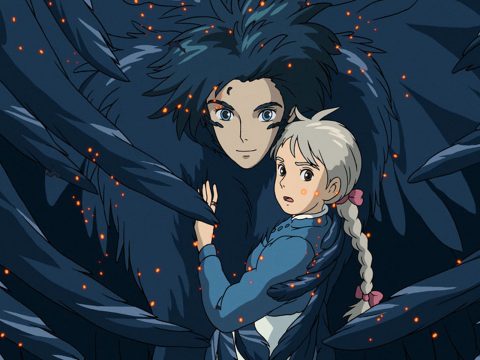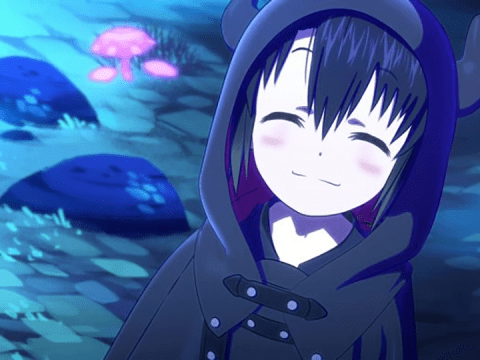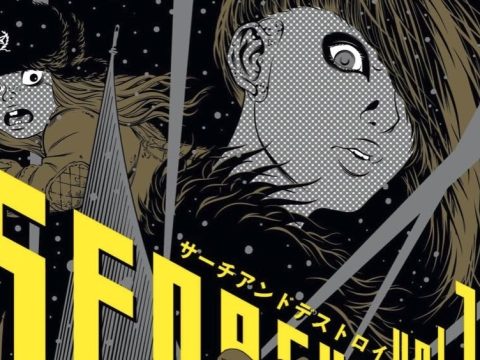 In the 1970s, Frederik L. Schodt was part of a group that wanted to translate manga and showcase it to the world. While manga’s international recognition was still to come, this led to him meeting Osamu Tezuka, the creator of Astro Boy, Kimba the White Lion, Phoenix and many other classic manga titles. The meeting was life-changing for Schodt, who then worked as Tezuka’s English interpreter and consultant, translated his titles into English, and published the Tezuka-themed book The Astro Boy Essays. As interest in the man called “The God of Manga” continues, so does Schodt’s work on Tezuka, as he’s now the force behind bringing The Osamu Tezuka Story to America.
In the 1970s, Frederik L. Schodt was part of a group that wanted to translate manga and showcase it to the world. While manga’s international recognition was still to come, this led to him meeting Osamu Tezuka, the creator of Astro Boy, Kimba the White Lion, Phoenix and many other classic manga titles. The meeting was life-changing for Schodt, who then worked as Tezuka’s English interpreter and consultant, translated his titles into English, and published the Tezuka-themed book The Astro Boy Essays. As interest in the man called “The God of Manga” continues, so does Schodt’s work on Tezuka, as he’s now the force behind bringing The Osamu Tezuka Story to America.
Coming in at over 900 pages, the book is being released this July by Stone Bridge Press. Schodt said that The Osamu Tezuka Story is an informational and biographical manga that both explains Tezuka’s work and who he was as a person. While it was initially published in 1992, this will be the first time you can read it in English.
“It’s an interesting biography because it was originally created by his company and by his sub-chief assistant, Ban Toshio,” Schodt told Otaku USA. “[Ban] was in charge of the night shift, helping Tezuka. He’s able to draw in Tezuka’s style, which is very nice. It really relies on the archives of Tezuka Productions and the memories of employees and people who knew him.”
Several books have been published in English on Tezuka, and Schodt praised both Helen McCarthy’s The Art of Osamu Tezuka: God of Manga and Natsu Onoda Power’s God of Comics: Osamu Tezuka and the Creation of Post-World War II Manga. But as more people wrote to Schodt for details on Tezuka’s life, he noticed that many scholars were referencing The Osamu Tezuka Story.
“I realized there might be some interest in this book being translated,” he said. “I have a strong relationship with Stone Bridge Press, so I went to them.” Besides getting the ball rolling for The Osamu Tezuka Story, Schodt naturally worked as the translator.

Once, the two of them got so into what they were talking about that they missed their flight from San Francisco to Canada, even though they were right at the place to board. Everyone else boarded without them. “I felt so terrible [for missing our flight], but he didn’t get mad at me, which was amazing,” Schodt said. “It’s an example of how you just start talking with him and you get absorbed. He wanted to know about American history. He wanted to know about Murphy’s Law, what does that mean? He wanted to know about nuclear fusion.”
He thinks this book will help give people a better idea of the man he once worked with. “This is a book about a very unique individual. Very rare in Japan to have someone of Tezuka’s intellectual caliber and stature who becomes obsessed with children’s manga and animation, way back in the 1940s. This is someone who, if you’re interested in Cool Japan or anime or manga and how that came to be, if you trace back the roots, you’ll always go back to Tezuka. He’s not the only person responsible for the size of manga, anime and Japanese pop culture internationally, but he’s really the person who created the framework for the whole manga/anime industry. It’s with good reason he’s known in Japan as the ‘God of Manga,’ even though he’s much more than that.”
These days Schodt goes back and forth between translating and writing his own books. Some of his books include Native American in the Land of the Shogun: Ranald MacDonald and the Opening of Japan (about a Native American named Ranald MacDonald living in 1800s Japan, before it was open to the world) and Professor Risley and the Imperial Japanese Troupe: How an American Acrobat Introduced Circus to Japan–And Japan to the West (about an American bringing the first circus to Japan).
While Schodt writes about all sorts of Japanese themed issues—everything from robots to America-Japan relations—he often finds his work going back to Tezuka. And in turn, he’s found himself in Tezuka’s biography.
“I also have a cameo role in The Osamu Tezuka Story, which I didn’t realize until I was translating,” he laughed. “My name doesn’t appear, but it’s me in a few panels and it’s based on a photograph. What’s that weird hairdo? That’s me a long time ago!”

Illustration from The Osamu Tezuka Story, © 1992 Toshio Ban & Tezuka Productions. Based on a photo by Shin’ichi Suzuki.
Danica Davidson’s book Manga Art For Beginners is being released March 29 and is available for pre-order. With more than 200 pages and hundreds of drawings, it takes a thorough look at each step for drawing your favorite manga character types, including ninja, butlers, chibi, bishonen, schoolgirls and schoolboys.







